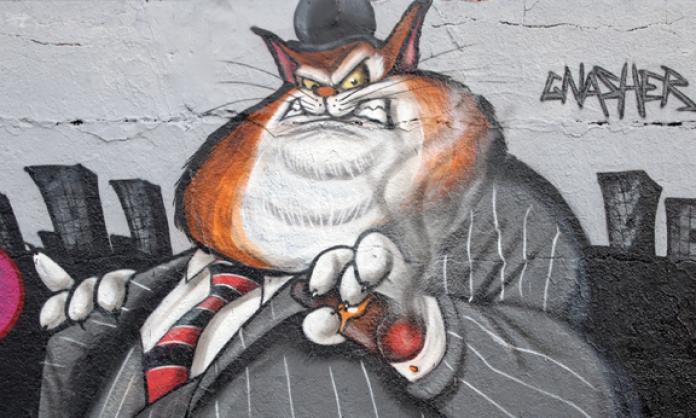For sheer bloody nerve, it’s hard to go past Australia’s banks.
The big four – ANZ, NAB, Westpac and the CBA – last year made $33 billion in profits, but they are raising a hue and cry about treasurer Scott Morrison’s budget proposal to impose a levy on their businesses. The amount involved is infinitesimal – 0.06 percent of their higher risk liabilities, that is 6 cents on every $100. But that doesn’t stop the banks stamping their exquisitely shod feet in a first class tantrum, ANZ Bank CEO Shayne Elliott decrying it as “populist bank bashing” and another senior banker as “a kick in the teeth”.
Ever since the global financial crisis of 2008-09, the bankers have been enjoying the lurk to beat all lurks. Fearing a bank collapse in Australia, the Rudd Labor government introduced a backstop to guarantee all bank deposits up to $250,000. More recently, the government also made provision for the Reserve Bank to hold $200 billion in on-tap funds for use by the big four banks in the event of any threat to their solvency.
Because of this public backing, the banks can borrow more cheaply on wholesale markets than if they had to look after their own affairs. That’s worth billions to their bottom line.
Essentially, the government has told the banks: you can bet the house (or, rather, other people’s houses) on lending all you like, make as much money as you possibly can, fill your executives’ pockets with as much as they can carry, and if it all goes horribly wrong we’ll pick up the pieces.
The banks have funded the real estate boom in Sydney and Melbourne, driving prices and household debt sky high, safe in the knowledge that, if it blows up in their faces, they can run to the treasurer for a bailout. No-one else gets treated so generously. Morrison’s levy is meant to claw back some of the benefit that the banks get from this generous support, and it’s on this user-pays basis that the levy has been backed by the Reserve Bank and Treasury, not to mention former treasurer Peter Costello and a string of business economists.
The banks complain that they’re being stretched on the rack. The opposite is true. One Financial Review journalist, formerly a Liberal Party adviser, estimates that the levy will generate only one-third of the financial windfall enjoyed by the banks from the government guarantee.
The banks have been benefiting enormously for years from the fees on everything from account-keeping and credit cards to mortgages and ATM withdrawals. They’ve also gouged tens of millions of dollars from clients of their financial planning arms, whose advisers have sent thousands of pensioners, farmers and small investors broke by selling them inappropriate products marketed by the banks.
They can get away with all this because the banking system is little more than a government-protected extortion racket. Both the Coalition and Labor regard the big four as pillars of the financial system and are never going to let even one of them go bust. They are too big to fail.
As far as governments are concerned, the bigger their profits the better, and the regulatory system is designed to ensure that outcome. No surprise, then, that Australian banks are now the most profitable in the world, earning a return on equity far higher than the norm overseas.
When it comes to reviewing the industry, the government puts the fox in charge of the hen house. Then treasurer Joe Hockey put former Commonwealth Bank CEO David Murray in charge of the last major review into the financial sector in 2014 and stuffed his panel with other financial sector executives. Needless to say, the review rejected the idea of a bank levy.
For all their foot-stamping, the bank bosses are likely to get away with passing on the cost of Morrison’s levy. They’ve already said that they will foist the financial burden onto customers, (small) shareholders and employees. Morrison says that customers can simply shop around and get a better deal. But that’s a joke. Courtesy of governments giving the green light to takeovers in the aftermath of the global financial crisis, the big four now account for 82 percent of the mortgage market.
If the banks are too big to fail, then banking is far too important to be left in the hands of the fat cats. The industry, like roads and utilities, should be put into public hands and run for the benefit of all, not just a tiny minority of the well-heeled.









